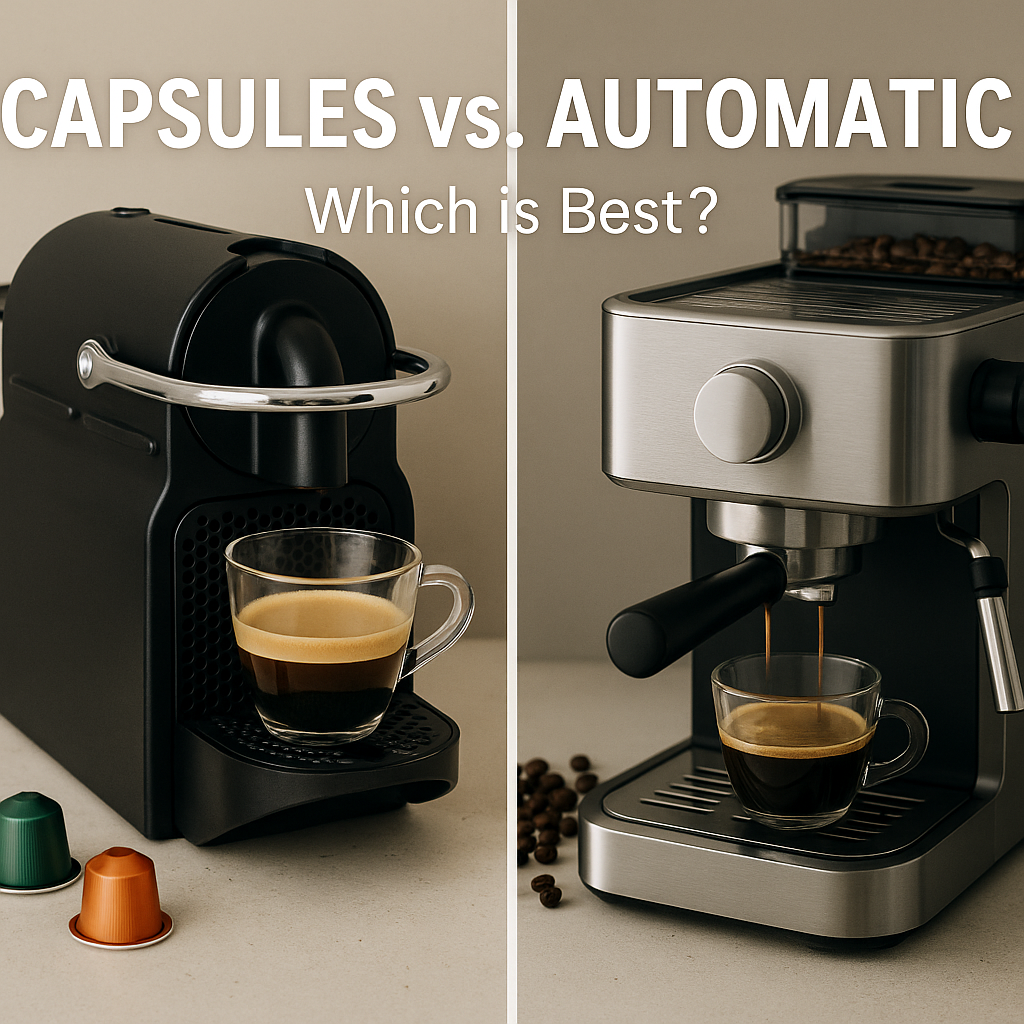Small kitchen living requires strategic appliance choices, and the debate between a toaster oven and panini press perfectly illustrates this challenge. Both appliances promise to transform your cooking routine within a compact footprint, but their capabilities and kitchen roles differ dramatically. Understanding these differences is crucial for making an informed decision that maximizes your limited counter space while meeting your cooking needs.
Whether you’re furnishing a studio apartment, college dorm, or simply looking to streamline your kitchen setup, this comprehensive comparison will help you determine which appliance delivers the best value for your specific lifestyle and culinary preferences.
Understanding Each Appliance
Toaster Oven: The Compact Kitchen Workhorse
A toaster oven functions as a miniaturized conventional oven, utilizing heating elements and fan circulation to cook food in an enclosed chamber. Modern units combine multiple cooking methods including baking, broiling, toasting, and convection cooking in a footprint roughly the size of a microwave.
Core functionality: Toaster ovens excel at reheating leftovers, baking small batches, toasting bread, and cooking single-serving meals. The enclosed design provides even heat distribution while the glass door allows monitoring without opening.
Size and capacity: Most toaster ovens accommodate 4-8 slices of toast simultaneously, with interior space sufficient for personal pizzas, baked potatoes, or small casserole dishes. Advanced models include rotisserie functions and multiple rack positions.
Panini Press: The Specialty Sandwich Maker
A panini press employs direct contact heating through hinged plates that compress and grill food simultaneously from both sides. The ridged surfaces create distinctive grill marks while the compression ensures even cooking and melting of ingredients.
Core functionality: Primarily designed for grilled sandwiches, panini presses also handle quesadillas, burgers, vegetables, and even certain cuts of meat. The dual-sided cooking significantly reduces cooking time compared to traditional methods.
Design variations: Basic models feature fixed plates, while premium units offer removable, reversible plates with both ridged and flat surfaces. Some include floating hinges that adjust to food thickness automatically.
Detailed Feature Comparison
Cooking Versatility
Toaster Oven Advantages: The enclosed chamber design enables multiple cooking methods including baking cookies, roasting vegetables, reheating pizza, making toast, and even cooking frozen dinners. Many models include preset programs for common foods, making operation foolproof.
Temperature control typically ranges from 150°F to 450°F, allowing for precise cooking requirements. The ability to use various cookware types (metal pans, glass dishes, ceramic ramekins) further expands cooking possibilities.
Panini Press Limitations: While excellent at its primary function, a panini press is fundamentally limited to contact cooking. You cannot bake, roast, or reheat dishes that require enclosed heating. The specialized nature means it excels in a narrow range of applications.
However, creative users have discovered alternative applications including grilling fruit, cooking bacon, making hash browns, and even preparing certain desserts like grilled pound cake or fruit crisps.
Space Efficiency and Storage
Counter Footprint: Standard toaster ovens require approximately 16-20 inches of width, 12-16 inches of depth, and 8-12 inches of height. The need for adequate ventilation around the unit further increases space requirements.
Most panini presses occupy 10-14 inches of width, 8-12 inches of depth, but only 4-6 inches of height when closed. The compact profile makes them easier to store in cabinets when not in use.
Storage considerations: Toaster ovens typically remain on counters due to their weight and frequent use. Panini presses store vertically in cabinets, though frequent users may prefer counter storage for convenience.
Energy Consumption and Efficiency
Power usage: Toaster ovens typically consume 1200-1800 watts during operation, while panini presses use 700-1500 watts. However, cooking time differences significantly impact total energy consumption.
Panini presses cook most items in 3-5 minutes, while toaster ovens may require 10-25 minutes depending on the task. For quick sandwich preparation, panini presses prove more energy-efficient. For longer cooking tasks, toaster ovens provide better value.
Heat-up time: Panini presses reach operating temperature in 2-3 minutes, while toaster ovens require 5-8 minutes for preheating. This difference matters for spontaneous cooking decisions.
Performance Analysis
Food Quality and Results
Toaster oven strengths: Excel at producing evenly heated food with proper browning and crisping. The air circulation prevents sogginess common in microwave reheating, while precise temperature control ensures consistent results across various food types.
Baking performance approaches conventional ovens for small batches, making them ideal for cookies, muffins, or personal-sized casseroles. The ability to use traditional cookware means familiar cooking techniques apply directly.
Panini press excellence: Creates perfectly compressed sandwiches with crispy exteriors and melted interiors that cannot be replicated by other appliances. The direct contact ensures rapid, even heating while the compression melds flavors effectively.
Grill marks add visual appeal to foods, while the fat drainage (in models with angled plates) creates healthier cooking compared to pan-frying. The speed advantage means hot, fresh food in minutes rather than extended cooking times.
Ease of Use and Learning Curve
Operation simplicity: Panini presses offer nearly foolproof operation – preheat, add food, close, and wait for the timer or visual cues. The minimal controls reduce confusion and potential mistakes.
Toaster ovens require more understanding of temperature, timing, and rack positioning. While more complex, the controls mirror conventional ovens, making the learning curve minimal for experienced cooks.
Cleanup considerations: Panini press plates clean easily, especially removable versions that are dishwasher-safe. However, grease and food residue can accumulate in hinges and crevices.
Toaster oven maintenance involves cleaning the interior, removing crumb trays, and occasionally washing racks and accessories. The enclosed design contains mess better but requires more comprehensive cleaning.
Small Kitchen Specific Considerations
Multi-functionality Value
In space-constrained kitchens, every appliance must justify its footprint through versatility and frequent use. Toaster ovens can replace or supplement multiple appliances including regular toasters, small ovens, and even microwaves for certain tasks.
The ability to bake, broil, toast, and reheat means fewer specialized appliances cluttering counters. For studio apartments or dorm rooms without full ovens, toaster ovens provide essential cooking capabilities.
Panini presses excel in their specialized role but cannot replace other appliances. However, for sandwich enthusiasts or those with specific dietary preferences (grilled vegetables, pressed wraps), the focused functionality may outweigh versatility concerns.
Daily Usage Patterns
Consider your typical eating habits when choosing between these appliances. Frequent sandwich eaters, college students living on quick meals, or those who enjoy pressed sandwiches for lunch will find panini presses indispensable.
Individuals who cook varied meals, bake occasionally, or need reliable reheating capabilities benefit more from toaster oven versatility. The appliance suits those who view cooking as both necessity and enjoyment.
Cost Analysis and Value
Initial Investment
Panini press pricing: Basic models start around $25-40, while premium units with removable plates and advanced features range from $80-150. The relatively simple construction keeps costs reasonable across all quality levels.
Toaster oven costs: Entry-level models begin around $50-80, with mid-range units ($100-200) offering convection and preset programs. High-end models with smart features and superior construction can exceed $300.
Value considerations: Calculate cost per function when comparing. A $100 toaster oven replacing a $30 toaster, $40 reheating solution, and $50 small oven provides excellent value. A $50 panini press that eliminates restaurant sandwich purchases pays for itself quickly.
Long-term Economics
Toaster ovens encourage home cooking by making meal preparation convenient and efficient. The ability to bake small batches prevents waste while reducing reliance on expensive convenience foods.
Panini presses enable homemade versions of expensive café sandwiches, potentially saving $3-8 per sandwich compared to restaurant purchases. For frequent sandwich consumers, the savings accumulate rapidly.
Making the Right Choice for Your Kitchen
Choose a Toaster Oven If You:
- Live in a space without a full-sized oven
- Cook diverse meals requiring different cooking methods
- Frequently reheat leftovers or frozen foods
- Enjoy baking small batches of cookies, muffins, or other treats
- Want to reduce energy costs compared to heating a full oven
- Need a reliable breakfast solution for toast and pastries
- Prefer one appliance that handles multiple cooking tasks
Choose a Panini Press If You:
- Eat sandwiches frequently and value perfect results
- Have extremely limited counter and storage space
- Prefer quick, simple cooking with minimal cleanup
- Want to recreate café-quality pressed sandwiches at home
- Focus on healthy cooking with fat drainage capabilities
- Need fast meal solutions for busy schedules
- Already have adequate cooking appliances for other needs
Top Product Recommendations
Best Toaster Ovens for Small Kitchens
Breville Mini Smart Oven ($180-220): Compact footprint with intelligent cooking programs, excellent temperature accuracy, and superior build quality. Perfect for those who want premium performance in minimal space.
Buy on Amazon amzn.toCuisinart Compact AirFryer Toaster Oven ($120-150): Combines toaster oven functionality with air frying capabilities, maximizing versatility without increasing footprint significantly.
Buy on Amazon amzn.toBLACK+DECKER 4-Slice Toaster Oven ($40-60): Budget-friendly option providing essential toaster oven functions without advanced features, ideal for basic needs and tight budgets.
Buy on Amazon amzn.toBest Panini Presses for Small Spaces
Cuisinart Griddler ($90-120): Versatile unit with removable, reversible plates functioning as panini press, grill, or griddle. Excellent for those wanting panini capabilities plus additional functions.
Buy on Amazon amzn.toHamilton Beach Panini Press ($35-50): Reliable, straightforward operation with adjustable height and drip tray. Perfect balance of performance and affordability for regular sandwich makers.
Buy on Amazon amzn.toGeorge Foreman Indoor/Outdoor Grill ($60-80): Compact design with removable plates and excellent heat distribution. The brand recognition ensures consistent performance and available replacement parts.
Buy on Amazon amzn.toCreative Solutions and Alternatives
Hybrid Options
Some manufacturers offer combination units that include both toaster oven and grill functions. While potentially appealing, these hybrids often compromise performance in both areas and may not save significant space.
Consider countertop convection ovens with grill plates or toaster ovens with broiling capabilities that can approximate some panini press functions through creative technique.
Space-Saving Strategies
Appliance garages or rolling carts can house either option when not in use, freeing permanent counter space. Vertical storage solutions work particularly well for panini presses due to their slim profile.
Consider seasonal rotation if your cooking patterns change throughout the year. Store the less-used appliance during periods when the other sees heavy use.
Final Decision Framework
The choice between a toaster oven and panini press ultimately depends on your cooking priorities, space constraints, and lifestyle patterns. Neither option is inherently superior – they serve different purposes and excel in distinct areas.
For maximum versatility and broad cooking capabilities, toaster ovens provide unmatched value in small kitchens. They replace multiple appliances while enabling creative cooking within space constraints.
For specialized sandwich excellence and minimal space commitment, panini presses deliver focused performance that cannot be replicated by other appliances. They excel at their intended purpose while remaining unobtrusive in small spaces.
Consider starting with the appliance that addresses your most frequent cooking need, then potentially adding the other as space and budget allow. Both can coexist in well-planned small kitchens where their distinct capabilities complement each other perfectly.
Remember that the best appliance choice is the one you’ll use consistently. A $200 toaster oven gathering dust provides less value than a $50 panini press used weekly for quick, satisfying meals that enhance your daily routine.




you save me a lot of time thanks
nice